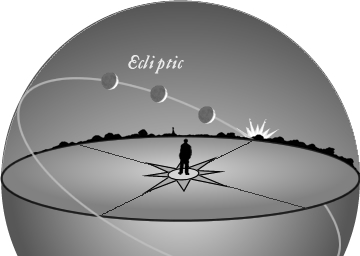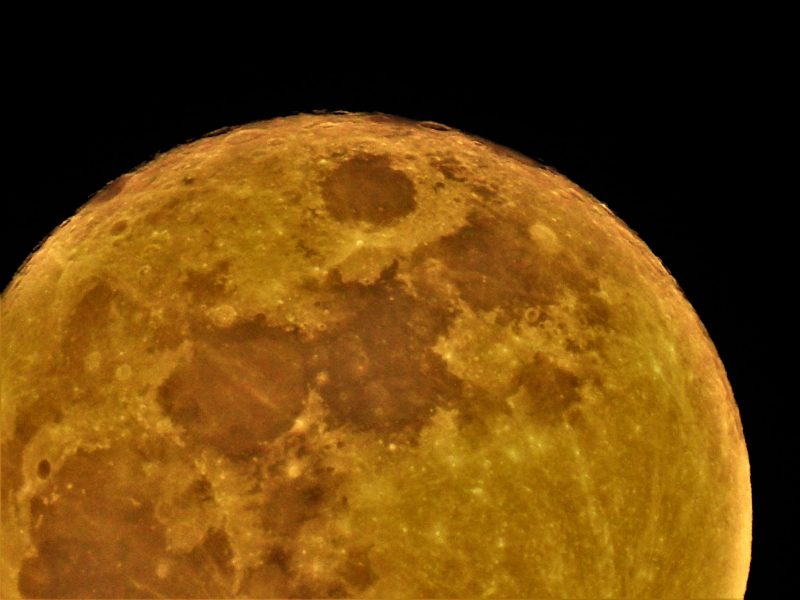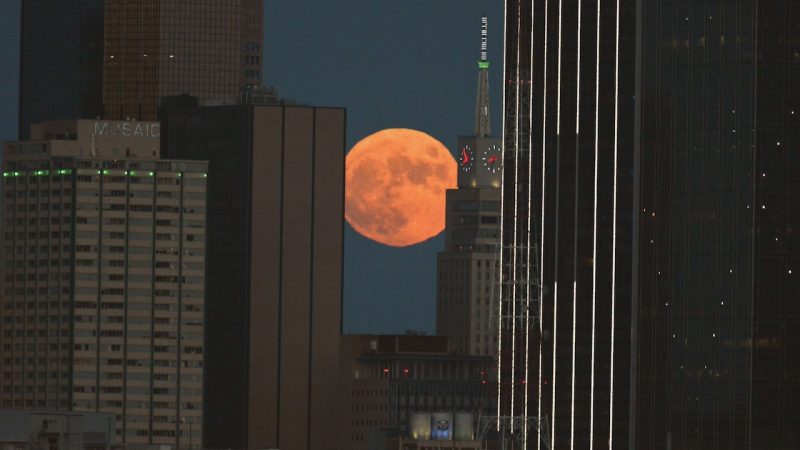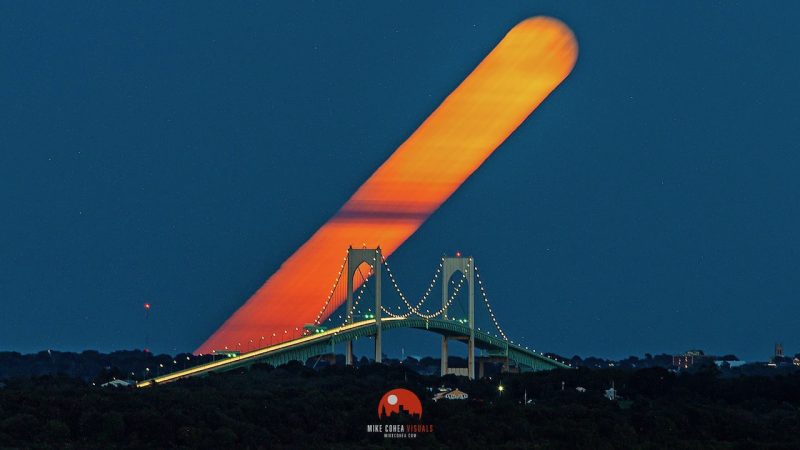Harvest Moon photo by Marek Nikodem in Poland.
Harvest Moon and autumn equinox
Here in the Northern Hemisphere, we call the full moon closest to the September equinox by the name Harvest Moon. In 2023, the equinox fell on September 23. The full moon will fall nearly six days later, overnight on September 28-29. So, for the Northern Hemisphere, this full moon – the full moon closest to our autumn equinox – is our Harvest Moon.
Want an exact time? The crest of the September 2023 full moon falls at 9:57 UTC (4:57 a.m. CDT) on September 29, 2023. More details on the September 2023 super Harvest Moon here.
Depending on the year, the full Harvest Moon can occur anywhere from two weeks before the autumn equinox to two weeks after. So it can come in either September or October. The Harvest Moon is either the last full moon of the summer season, or the first full moon in autumn.
This year, the September full moon is the first of the season’s three full moons. That’s the first full moon of autumn for the Northern Hemisphere, and the first spring full moon for the Southern Hemisphere.
What makes the Harvest Moon special?
Harvest Moon is just a name. In some ways, it’s like any other full moon name. But these autumn full moons do have special characteristics related to the time of moonrise. Nature is particularly cooperative in giving us dusk-till-dawn moonlight for several evenings in a row around the time of the Harvest Moon.
All full moons rise around sunset. And, generally speaking, the moon rises about 50 minutes later each day, as it moves in orbit around Earth. But when a full moon happens close to an autumn equinox, the moon on the following nights rises closer to the time of sunset. For mid-temperate latitudes, the moon rises only about 20 to 25 minutes later daily for several days before and after the full Harvest Moon.
High northern latitudes
For very high northern latitudes, there’s even less time between successive moonrises. The farther north you live, the greater the Harvest Moon effect. For instance, at Anchorage, Alaska (61 degrees north latitude), the moon will rise at nearly the same time for a week!
The difference between 50 minutes and 25 minutes might not seem like much. But it means that, in the nights after a full Harvest Moon, you’ll see the moon ascending in the east relatively soon after sunset. The moon will rise during or near deepening twilight on these nights, presenting dusk-till-dawn moonlight for several nights in a row around the time of the Harvest Moon.
Click here for a printable calendar showing the time of moonrise for your location


Is the Harvest Moon bigger, or brighter or more colorful?
Because the moon’s orbit around Earth isn’t a perfect circle, the Harvest Moon’s distance from Earth – and apparent size in our sky – differs from year to year. In 2019, the Harvest Moon was actually a micro-moon or mini-moon: the most distant and smallest full moon of that year. And – in 2015 – the Harvest Moon was the year’s closest and biggest supermoon of the year.
So, the full Harvest Moon isn’t necessarily closer than any other full moon. But it might be. The moon’s distance at full moon varies from year to year. In 2023, the Harvest Moon is a full supermoon, but not the closest supermoon for the year.
It looks bigger, but isn’t
Still, in any year, you might think the Harvest Moon looks bigger or brighter or more orange. That’s because the Harvest Moon has such a powerful mystique. Many people look for it shortly after sunset around the time of full moon. After sunset around the time of any full moon, the moon will always be near the horizon. It’ll have just risen. It’s the location of the moon near the horizon that causes the Harvest Moon – or any full moon – to look big and orange in color.
A big moon seen near the horizon is undergoing a psychological effect. It’s a trick your eyes are playing – an illusion – called the moon illusion. You can find many lengthy explanations of the moon illusion by doing an online search for those words.

Orange color due to thickness of Earth’s atmosphere near horizon
By the way, the orange color of a moon near the horizon isn’t a psychological effect. It’s a true physical effect, which stems from the fact that – when you look toward a horizon – you’re looking through a greater thickness of Earth’s atmosphere than when you gaze up and overhead.

Southern Hemisphere moons, and Blue Moons
For the Southern Hemisphere, the Harvest Moon always comes in March or early April. It last took place on March 18, 2022, and will next happen March 25, 2024. But, it’s our understanding that the Southern Hemisphere doesn’t name its full moons as we do in the Northern Hemisphere. Do you know? If so, tell us your thoughts on Southern Hemisphere full moon names in the comments below.
Read more: Full moon names by month and season
Most often, a season has three full moons. Having four full moons in one season is quite atypical. Therefore, some people refer to the third of these four full moons as a seasonal Blue Moon. The next seasonal Blue Moon will be August 19, 2024.
Seasonal Blue Moons preceded what’s now a better known definition. By popular acclaim, most regard a Blue Moon as the second of two full moons in one calendar month. In fact, overnight on August 30-31, 2023, we had a full Blue Moon supermoon.

How did the Harvest Moon get its name?
The shorter-than-usual lag time between moonrises around the full Harvest Moon means no long period of darkness between sunset and moonrise for days in succession.
In the days before tractor lights, the lamp of the Harvest Moon helped farmers gather their crops despite the diminishing daylight hours. As the sun’s light faded in the west, the moon would soon rise in the east to illuminate the fields throughout the night.
Who named the Harvest Moon? That name probably sprang to the lips of farmers throughout the Northern Hemisphere, on autumn evenings, as the Harvest Moon aided in bringing in the crops.
The name was popularized in the early 20th century by the song below.
Shine On Harvest Moon
By Nora Bayes and Jack Norworth (1903)
Shine on, shine on harvest moon
Up in the sky,
I ain’t had no lovin’
Since January, February, June or July
Snow time ain’t no time to stay
Outdoors and spoon,
So shine on, shine on harvest moon,
For me and my gal.
And don’t miss this more recent version of the song by Leon Redbone:
Bottom line: The Northern Hemisphere’s Harvest Moon falls overnight September 28-29, 2023, or almost 6 days after the September equinox. It’s also a supermoon!











